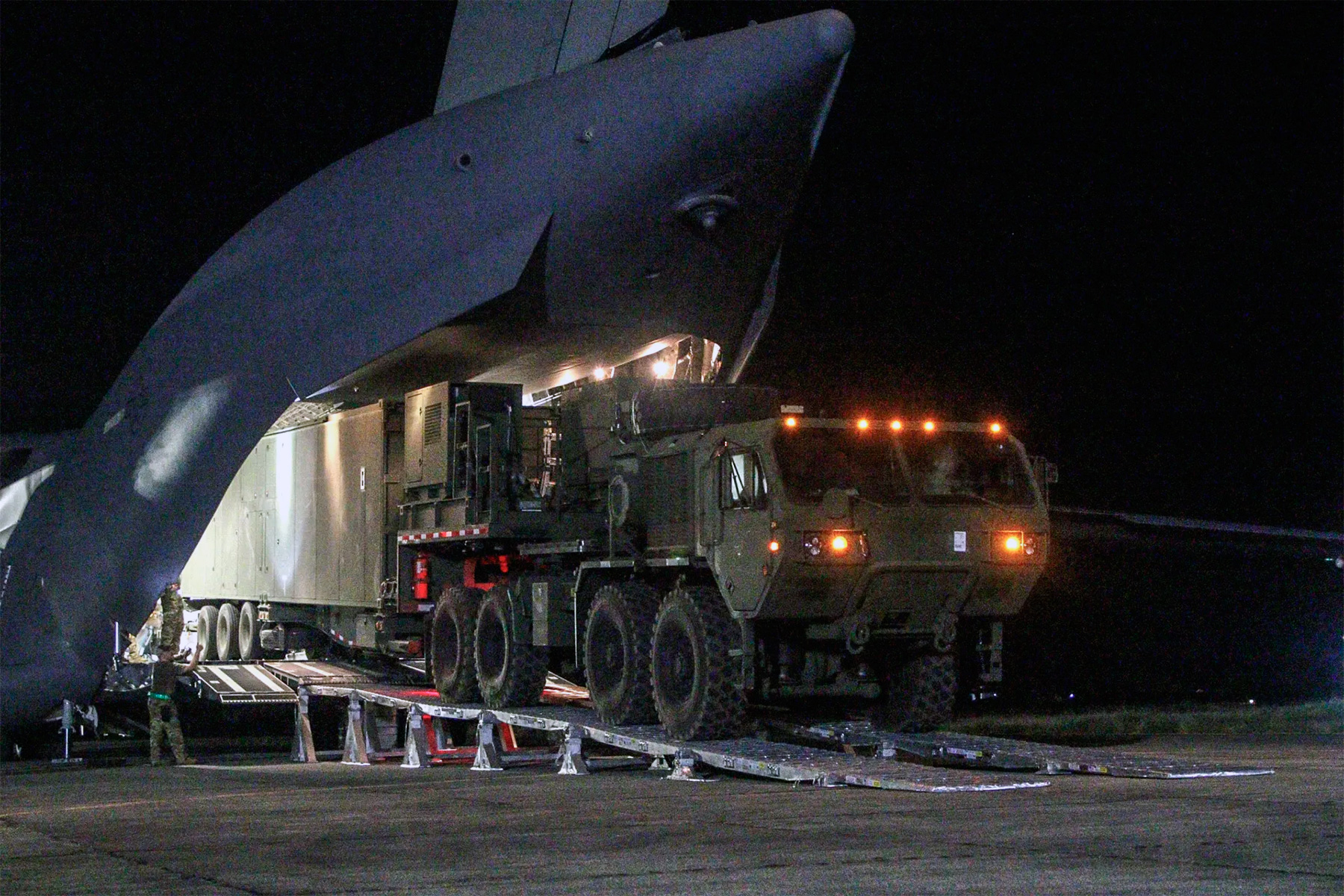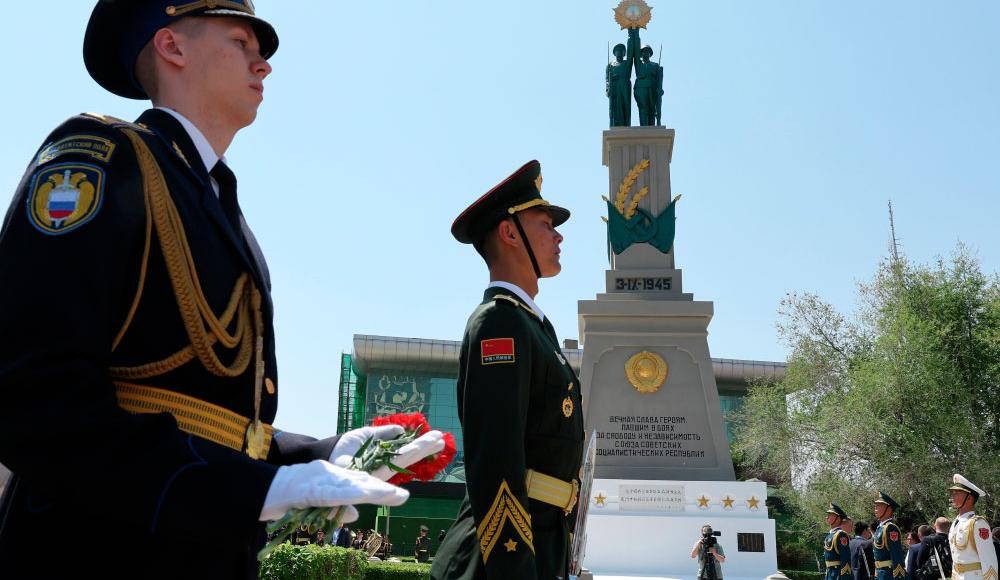Relations between Russia and China today are stable and characterized by an elevated level of mutual trust. The rapprochement between Moscow and Beijing takes place against the backdrop of pressure from the United States and its allies at the regional and global levels. This competition, and even confrontation, has a pronounced military-technical dimension, including strategic arms, nuclear and non-nuclear, offensive, and defensive. Not so long ago, the formula of “dual counteraction” became publicized by Russia and China as a response to “dual deterrence” on the part of the United States. Let us try to understand what is happening in this sphere now.
As the arms control system degrades, the emphasis on deterrence in international military-political relations continues to shift, including in the form of the so-called “extended deterrence.” This approach is particularly dangerous due to the involvement of non-nuclear-weapon states in the preparation and planning of US nuclear operations. The essence of “extended deterrence” is changing: “nuclear umbrellas” are being replaced by supporting the possible use of nuclear weapons by non-nuclear forces. This trend is particularly evident in the interaction between Washington and Seoul, which established the Nuclear Consultative Group and approved (on the margins of the NATO summit) the Guidelines for Nuclear Deterrence and Nuclear Operations on the Korean Peninsula.
The deployment of new U.S. intermediate-range missiles in Europe and Asia is imminent, as well as the encouragement of the emergence of such weapons in the arsenals of the U.S. allies and partners, about which unambiguous statements were also made on the margins of the NATO summit. The appearance of intermediate-range missiles in service with the U.S. Army's “Multi-Domain Task Force” units is largely due to the dynamics of the interservice struggle within the U.S. armed forces as a whole: since the great-power confrontation is in full swing, and its most important element is the long-range precision weapons capability and “multidomain operations,” each service must participate.
In such an environment, we cannot rule out deepening Russian-Chinese cooperation in this very sphere, up to and including the transfer of the previously existing practice of joint computer exercises on missile defense to the practical plane. Perhaps soon we will also see joint missile defense exercises with China, especially since China already has a huge arsenal of intermediate-range missiles (it seems that Russia will soon roll-out those it as well), while Russia has experience in countering U.S. missile weapons gained in the course of the Special Military Operation.
Washington's desire to establish a dialog on arms control and risk reduction with Moscow and Beijing, albeit with each of them separately, looks very cynical. At the doctrinal level, the U.S. maintains its policy of preserving and strengthening its so-called superiority in space (primarily regarding military and dual-use tasks). Obviously, this situation runs counter to the long-term interests in the sphere of space exploration of Russia and China, as well as humanity.
Today it is difficult to talk about disarmament, nuclear and non-nuclear since most countries of the world are increasing their military expenditures. Meanwhile, in accordance with the Article VI of the NPT, nuclear disarmament is linked to “general disarmament under international control.” But this does not mean that we should not look for options to reverse this trend and revitalize arms control. Moreover, what is particularly important in a tense military and political situation, arms control simultaneously serves as an effective tool for strengthening national security, primarily in the military sphere.
Relations between Russia and China today are stable and characterized by an elevated level of mutual trust. The rapprochement between Moscow and Beijing takes place against the backdrop of pressure from the United States and its allies at the regional and global levels. This competition, and even confrontation, has a pronounced military-technical dimension, including strategic arms, nuclear and non-nuclear, offensive, and defensive. Not so long ago, the formula of “dual counteraction” became publicized by Russia and China as a response to “dual deterrence” on the part of the United States. Let us try to understand what is happening in this sphere now.
Deterrence as a way of life
As the arms control system degrades, the emphasis on deterrence in international military-political relations continues to shift, including in the form of the so-called “extended deterrence.” This approach is particularly dangerous due to the involvement of non-nuclear-weapon states in the preparation and planning of US nuclear operations. The essence of “extended deterrence” is changing: “nuclear umbrellas” are being replaced by supporting the possible use of nuclear weapons by non-nuclear forces. This trend is particularly evident in the interaction between Washington and Seoul, which established the Nuclear Consultative Group and approved (on the margins of the NATO summit) the Guidelines for Nuclear Deterrence and Nuclear Operations on the Korean Peninsula.
New coalition and alliance constructs resembling NATO are taking shape: AUKUS, new formats in Northeast Asia between the United States, South Korea, and Japan emphasizing space infrastructure. NATO is also increasing engagement with countries in the notional Indo-Pacific region. At the same time, in the rhetoric and documents of the United States and some of its allies, Russia, China, Iran and the DPRK are increasingly often appearing in a bundle as a kind of “quartet of evil.” They (together with Belarus) are mentioned in the declaration of the NATO summit in Washington in the context of supporting Russia during the Special Military Operation.
New missile crises
The deployment of new U.S. intermediate-range missiles in Europe and Asia is imminent, as well as the encouragement of the emergence of such weapons in the arsenals of the U.S. allies and partners, about which unambiguous statements were also made on the margins of the NATO summit.
Washington seems to have convinced itself that the 1980s “NATO dual solution,” i.e., the deployment of U.S. intermediate-range and shorter-range missiles in Europe in parallel with negotiations on their reduction with the USSR, was a remarkable success story, and is now trying a similar scheme with respect to the PRC. Other factors that contributed to the end of the Cold War and the emergence of an arms control and security architecture are ignored, as are the significant differences between the political and military situation of that period and today.
At the same time, the appearance of intermediate-range missiles in service with the U.S. Army's “Multi-Domain Task Force” units is largely due to the dynamics of the interservice struggle within the U.S. armed forces as a whole: since the great-power confrontation is in full swing, and its most important element is the long-range precision weapons capability and “multidomain operations,” each service must participate (by the way, the Marine Corps is not left out either).
In such an environment, we cannot rule out deepening Russian-Chinese cooperation in this very sphere, up to and including the transfer of the previously existing practice of joint computer exercises on missile defense to the practical plane. Perhaps soon we will also see joint missile defense exercises with China, especially since China already has a huge arsenal of intermediate-range missiles (it seems that Russia will soon roll-out those it as well), while Russia has experience in countering U.S. missile weapons gained in the course of the Special Military Operation.
Control or Decontrol?
Considering all the above, Washington's desire to establish a dialog on arms control and risk reduction with Moscow and Beijing, albeit with each of them separately, looks very cynical. Even statements, speeches and documents that are aimed at promoting a positive agenda in arms control always make reservations about the special position of the United States. This is about maintaining American superiority (or at least “advantage”) in most domains, including for the sake of ensuring the security of Washington's allies and partners. To be fair, today majority of these “allies and partners” are not at all opposed to “getting in line” to “deter” Russia and China. Significantly, it was the U.S. military-technical cooperation with Taiwan that recently became the formal reason for the termination of consultations between Beijing and Washington on arms control and non-proliferation issues.
At the doctrinal level, the U.S. maintains its policy of preserving and strengthening its so-called superiority in space (primarily regarding military and dual-use tasks). Obviously, this situation runs counter to the long-term interests in the sphere of space exploration of Russia and China, as well as humanity.
In such an environment, it is understandable that Russia and China are reluctant to discuss arms control issues separately with the Americans, while in other areas they are engaged in tough confrontation with them. At the same time, at the level of the scientific and expert community, we should continue to work in this direction in bilateral and multilateral formats.
It is also worth recalling that our good-neighbourly relations with China are based, among other things, on conventional arms control in border areas (Shanghai and Moscow agreements), and the relevant control body recently met again in Astana. The Russian-Chinese mutual commitment not to be the first to use nuclear weapons against each other also plays a significant role.
There is also a Russian-Chinese agreement on notifications of launches of ballistic missiles and space launch vehicles. It is possible to use such mechanisms in the future to reduce regional and global tensions involving new states. However, current U.S. policy is not conducive to such work, despite a declared willingness to consider a notification regime that would involve N5 - all five official members of the nuclear club.
Joint actions by Russia and China on international platforms are important. It is necessary to continue working at the IAEA, including on novel issues such as AUKUS nuclear submarines (and the prospects for nuclear submarines in other non-nuclear-weapon states that are members of the NPT). Preventing a space arms race is important: the Russian-Chinese draft Treaty on Prevention the Placement of Weapons in Outer Space remains the only well-developed instrument in this area.
Today it is difficult to talk about disarmament, nuclear and non-nuclear since most countries of the world are increasing their military expenditures. Meanwhile, in accordance with the Article VI of the NPT, nuclear disarmament is linked to “general disarmament under international control.” But this does not mean that we should not look for options to reverse this trend and revitalize arms control. Moreover, what is particularly important in a tense military and political situation, arms control simultaneously serves as an effective tool for strengthening national security, primarily in the military sphere.
Originally published in Russian in the Profile journal.







